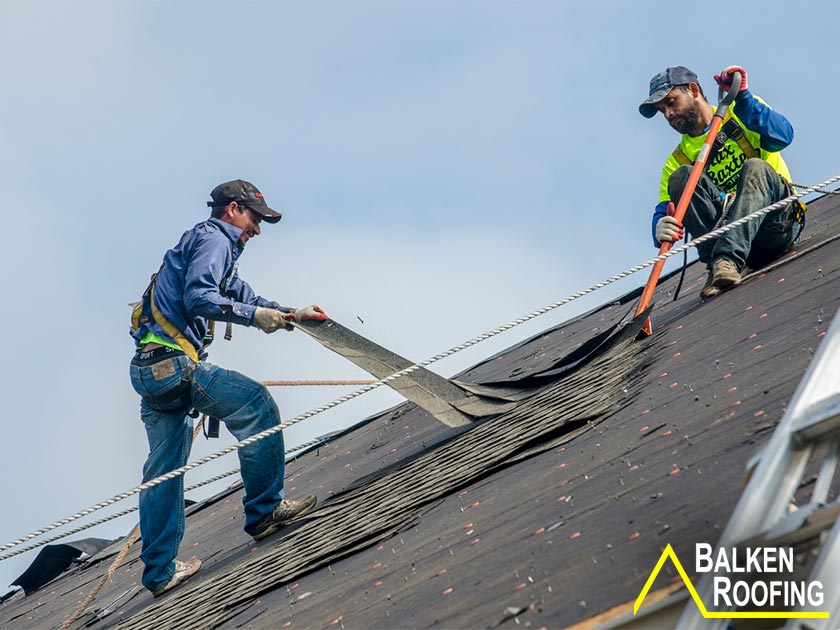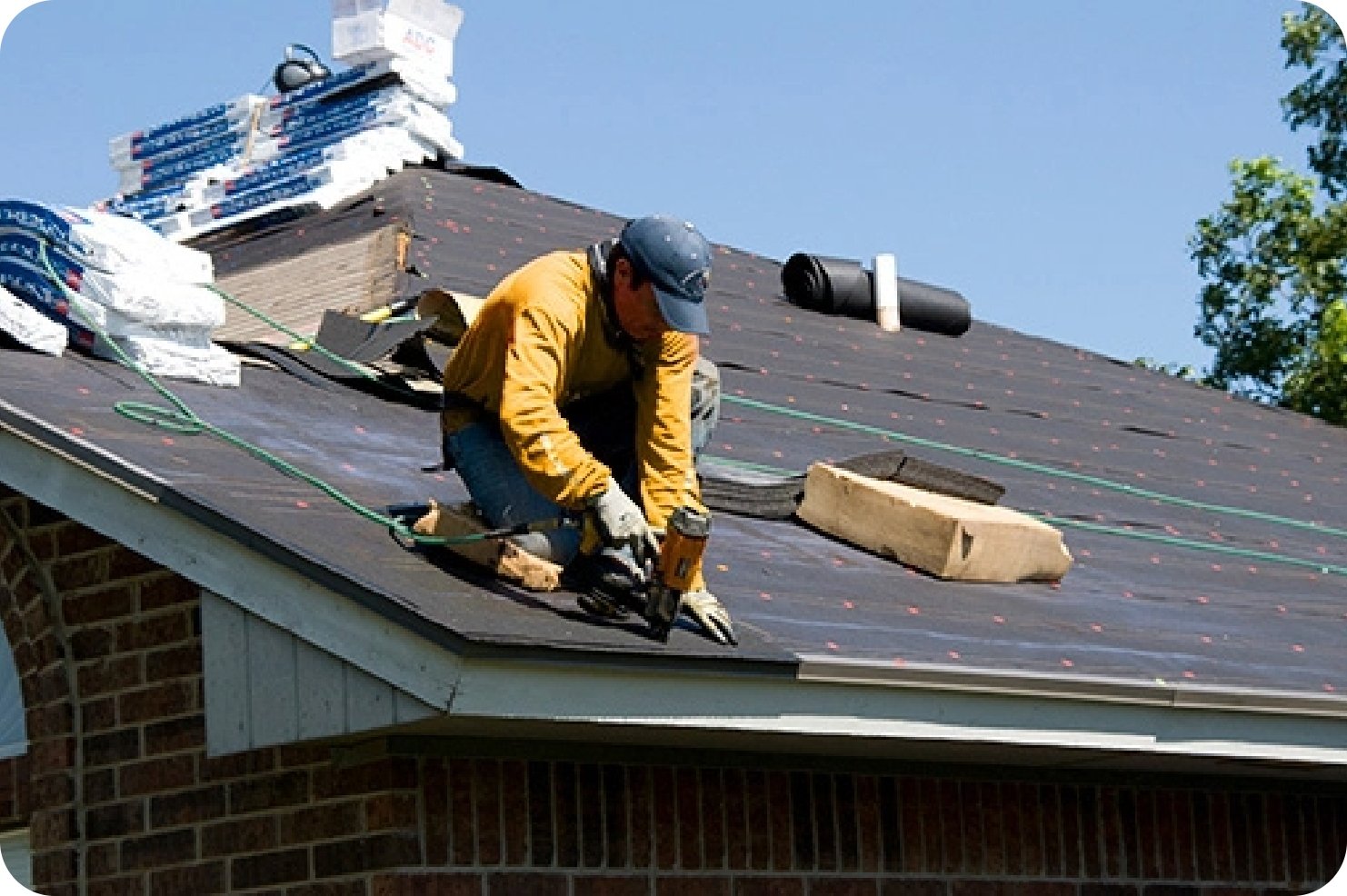Understanding the Different Kinds Of Roof Coverings: A Comprehensive Overview for Homeowners
With an array of choices-- ranging from the traditional gable to the modern flat-- each kind provides distinct benefits and difficulties that ought to align with the homeowner's details requirements and environmental considerations. As we check out the details of numerous roof kinds, it ends up being obvious that one size does not fit all; the appropriate option might amaze you.
Saddleback Roof
Gable roofings, identified by their triangular shape, are amongst one of the most prominent roof designs as a result of their simpleness and efficiency in losing water and snow. This design includes two sloping sides that meet at a ridge, permitting for effective drainage and lessening the danger of water build-up. The steep pitch frequently related to saddleback roofs boosts their capability to deal with hefty precipitation, making them ideal for numerous climates.
Along with their sensible advantages, saddleback roofs offer aesthetic versatility. They can be adapted to different architectural styles, from conventional to modern-day homes. The design can also suit additional features such as dormer home windows, which boost all-natural light and air flow in the attic area.
In addition, saddleback roofs offer adequate space for insulation, adding to power performance. Property owners can select from a variety of roofing materials, including asphalt tiles, steel, and tiles, additionally improving customization alternatives.
Regardless of their advantages, gable roofings might require added support in locations susceptible to high winds or heavy snowfall. Overall, the gable roof covering stays a popular choice because of its blend of performance, longevity, and visual charm.
Apartment Roofs
Level roofs are typically recognized for their minimalist layout and sensible applications, specifically in industrial and industrial settings (oahu roofing). These roofing systems include a almost horizontal or straight surface area, which allows for easy building and construction and flexible space usage. While they might lack the aesthetic charm of pitched roof coverings, flat roofing systems supply countless benefits, especially in urban settings where optimizing room is vital
Among the main benefits of level roofings is their ease of access. Homeowners can utilize the roof covering area for various purposes, such as rooftop yards, balconies, or photovoltaic panel setups. Additionally, flat roofs are generally a lot more affordable to mount and keep contrasted to their sloped counterparts, as they call for less products and labor.
Common materials used for flat roofings consist of built-up roof covering (BUR), modified bitumen, and single-ply membranes, each offering distinct benefits. In general, flat roofs offer as a functional and adaptable choice for numerous property owners and companies alike.
Hip Roof Coverings
Hip roofs are characterized by their sloped sides that merge on top, forming a ridge. This layout stands out from gable roofing systems, as all four sides of a hip roof covering slope downwards towards the wall surfaces, providing a much more stable structure. The angle of the slopes can vary, enabling adaptability in building appearances and functionality.
One of the primary benefits of hip roofs is their ability to endure hefty winds and adverse weather conditions. The sloped surface areas allow linked here much better water drain, minimizing the threat of leaks and water damages. Furthermore, hip roof coverings use increased attic space, which can be used for storage space and even transformed into livable areas.
Nonetheless, building a hip roofing can be extra complicated and pricey than easier roofing types, such as saddleback roofs. The extra product and labor entailed in developing the slopes and making sure appropriate architectural honesty can bring about higher costs. In spite of these drawbacks, several property owners prefer hip roofings for their durability, visual charm, and potential for power performance.
Mansard Roofs
Mansard roofings, usually identified by their special four-sided style, feature two inclines on each side, with the reduced slope being steeper than the top. This architectural style, stemming from France in the 17th century, is not just cosmetically attractive however useful, as it makes the most of the functional area in the upper floorings of a building. The steep lower slope permits even more headroom, making it an excellent selection for attics or lofts, which can be exchanged living spaces.
Mansard roofing systems are identified by their flexibility, suiting different building designs, from standard to modern-day. They can be created with different materials, including asphalt roof shingles, slate, or metal, giving home owners with a variety of options to match their spending plans and preferences. Furthermore, the style enables the assimilation of dormer windows, improving natural light and ventilation in the top levels.
Nevertheless, it is necessary to take into consideration the potential drawbacks. Mansard roofings might require more upkeep due to the intricacy of their layout, and their steep slopes can be challenging for snow and rain overflow. Overall, mansard roofs integrate style with practicality, making them a preferred choice among home owners looking visit this site right here for unique architectural features.
Lost Roofings
As home owners significantly seek simpleness and performance in their architectural designs, lost roofs have become a preferred option. Defined by a solitary sloping aircraft, a shed roofing offers a minimal visual that enhances various home styles, from modern to rustic.
One of the primary advantages of a shed roof covering is its uncomplicated construction, which often equates to reduce labor and product prices. This design enables for effective water drainage, lowering the threat of leaks and water damages. Additionally, the upright slope offers enough area for skylights, boosting natural light within the inside.
Dropped roofings likewise use convenience in regards to use. content They can be successfully integrated into enhancements, garages, or exterior frameworks like sheds and pavilions. Moreover, this roofing system design can suit numerous roof products, including metal, asphalt roof shingles, or also eco-friendly roofings, aligning with green initiatives.
However, it is necessary to consider local environment problems, as hefty snow loads might necessitate changes to the roofing's angle or structure. Generally, lost roofings provide a sensible and visually pleasing option for homeowners aiming to make the most of capability without jeopardizing style.
Final Thought


Gable roofs, defined by their triangular shape, are amongst the most preferred roof styles due to their simplicity and effectiveness in dropping water and snow. oahu roofing. The high pitch generally connected with gable roofings enhances their ability to deal with hefty precipitation, making them appropriate for different environments
While they may do not have the aesthetic appeal of pitched roofings, flat roofings provide countless advantages, specifically in metropolitan atmospheres where optimizing space is essential.
